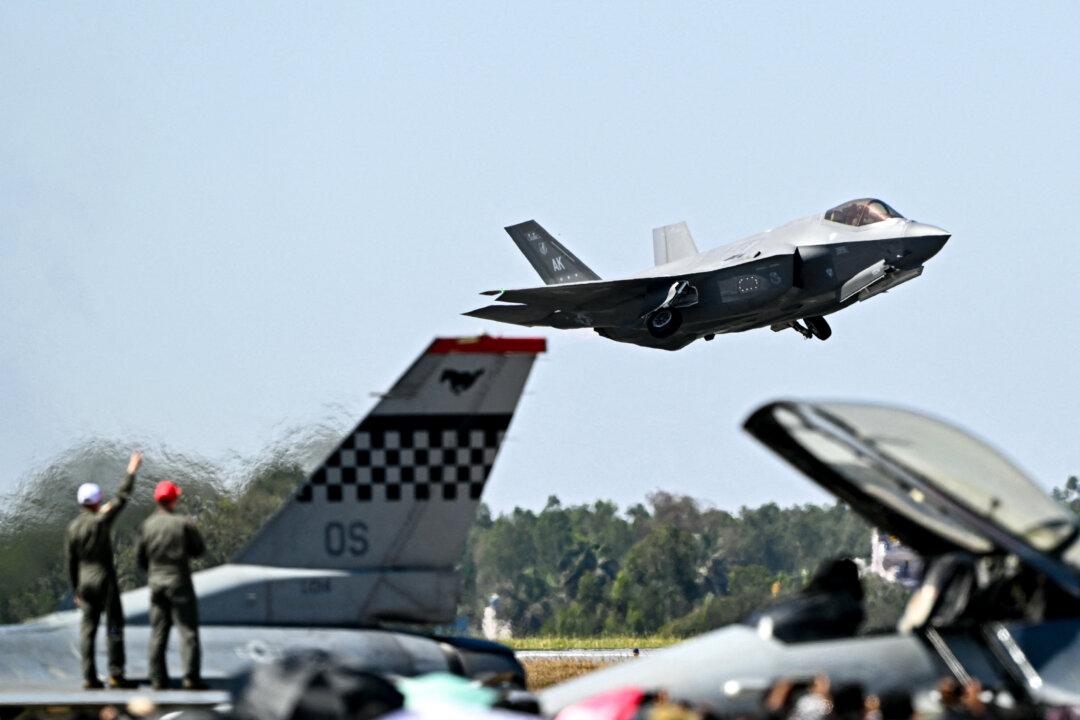Chinese researchers and engineers have developed a lighter-than-air drone: an airship with infrared sensors optimized to detect the heat plume that all jet bombers and fighters emit.
However, it is important to note that the maximum claimed ranges for detection occur when the stealth aircraft is detected by infrared sensors from the back or the side of the plane. Frontal detection, especially of high-flying stealth aircraft, would be reduced to around 217.5 miles due to the aircraft’s reduced forward heat profile.
The optimized sensors were developed by researchers at the Changchun Institute of Optics, Fine Mechanics, and Physics (CIOMP). They will be mounted on a large lighter-than-air-drone, about 150 meters, that can move slowly or hover for very long periods at approximately 65,000 feet.
Deploying these drones at this height maximizes their range. Still, it does not eliminate the problem that all infrared detection systems suffer; that is, detection ranges can be dramatically lowered by clouds and other atmospheric conditions. But even so, such detection ranges under optimal conditions are a noteworthy addition to China’s multilayered approach to detecting stealth aircraft, which includes various types of radar that detect stealth aircraft from even greater ranges and are less affected by weather.
Further, the use of telescopes suggests the possibility that their ability to detect infrared signatures comes out of focusing on a relatively small airspace. If this is the case, many such drones would be required to cover large airspace.
The new anti-stealth drone is not revolutionary. Indeed, while the infrared sensor tech is enhanced by the use of telescopes and frequency tuning focused on detecting the exhaust plume of stealth aircraft, its core enabling technology is widely used in mercury-cadmium-telluride-based infrared detectors. So we are not talking about any kind of scientific breakthrough. Instead, we are talking about clever engineering that the United States and other technologically sophisticated countries could quickly replicate in theory.
The type of aircraft this new airborne system is designed to detect and track include the F-22, the F-35, the brand-new B-21, and the B-2. But such aircraft may also be detected by China’s network of over-the-horizon radars that can detect stealth aircraft at ranges greater than the new airborne infrared detection systems.
While neither the new airborne infrared sensor nor the over-the-horizon radar provides tracking data that is accurate enough to guide a missile directly into an aircraft, for example, a weapons quality track, they can provide more than enough information to be highly useful in a number of ways in countering stealth aircraft.
They can, for instance, provide more than enough information to guide intercepting fighters directly to the stealth aircraft. By narrowing down the search space, they can cue up anti-air missile radars that can focus their radar energy into a smaller area, and in doing so, detect the stealth aircraft and provide a weapons quality tracking that will allow anti-air missiles to lock onto the stealth aircraft. They have the potential to guide missiles that have lock-on after-launch capabilities to get close enough so that missiles’ sensors, radar infrared, or both can lock on to the incoming stealth aircraft.
Does this mean stealth is dead? No. But if your air superiority strategy is built around the idea that incorporating stealth into your aircraft will inevitably allow them to achieve lopsided kill-to-death ratios or be able to attack targets deep in enemy territory with impunity, then putting too many eggs in the stealth basket could be a big mistake.
Consequently, perhaps the United States needs to reconsider just how much it is counting on stealth versus other options less vulnerable to a breakthrough, or an accumulation of minor breakthroughs, that effectively strips away the advantages of a stealth aircraft for which we paid a huge premium to acquire, maintain, and support.







